NASA unveils first analysis of world-ending asteroid Bennu that could crash into Earth in next 150 years – after landmark mission saw agency send probe to giant space rock
NASA has given the world a look at the first asteroid samples brought back to Earth, which could help with ‘fundamental questions’ about the evolution of our solar system.
The first image of rock and dust from Bennu was shown during a live stream at 11 a.m. ET, which scientists say contains abundant water in the form of hydrated clay minerals that contain carbon.
NASA Administrator Bill Nelson said it is the largest carbon-rich asteroid sample returned to Earth and will help scientists determine the origin of elements that could have led to life on our planet.
Carbon and water molecules are “exactly the kind of material we wanted to find,” Nelson said during the live stream.
The sample will also improve our understanding of Earth’s defenses against asteroids – such as Bennu, which could hit Earth in 2182.
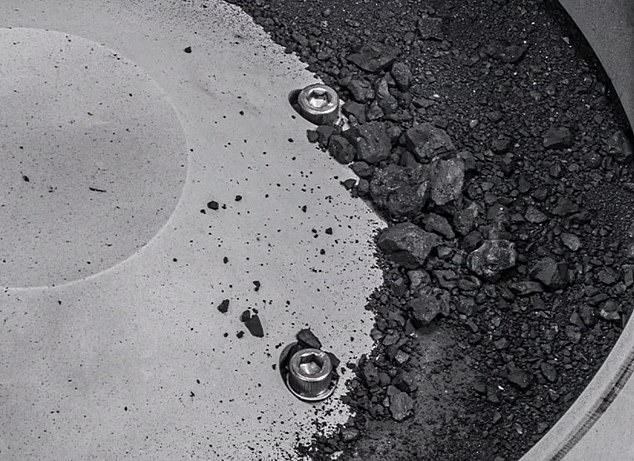
The first image of rock and dust from Bennu was shown during a live stream at 11 a.m. ET, which scientists say contains abundant water in the form of hydrated clay minerals that contain carbon
The OSIRIS-REx mission collected rock and dust from the asteroid in 2020, and a capsule containing the precious cargo returned to Earth a little more than two weeks ago, landing in the Utah desert.
The mission brought back about eight ounces of debris, which NASA says contains building blocks from the dawn of our solar system and could provide clues to understanding how life formed on Earth.
NASA chose to sample Bennu because it is believed to be rich in organic compounds.
Scientists think similar asteroids could have delivered organic building blocks to Earth and water through collisions billions of years ago.
Bennu’s orbit, which crosses that of our planet, also made the round trip easier than going to the Asteroid Belt, which lies between Mars and Jupiter.
NASA researchers have so far been encouraged by the discovery of ‘bonus particles’, described as black dust and debris covering the sample collector.
Osiris-Rex, the mothership, blasted off in 2016 with the $1 billion mission.
It reached Bennu two years later and in 2020 grabbed debris from the small, round space rock with a long stick of vacuum.
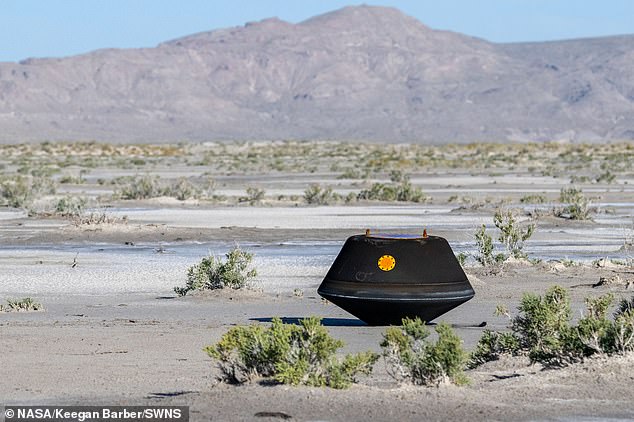
The OSIRIS-REx mission collected rock and dust from the asteroid in 2020, and a capsule containing the precious cargo returned to Earth a little over two weeks ago, landing in the Utah desert
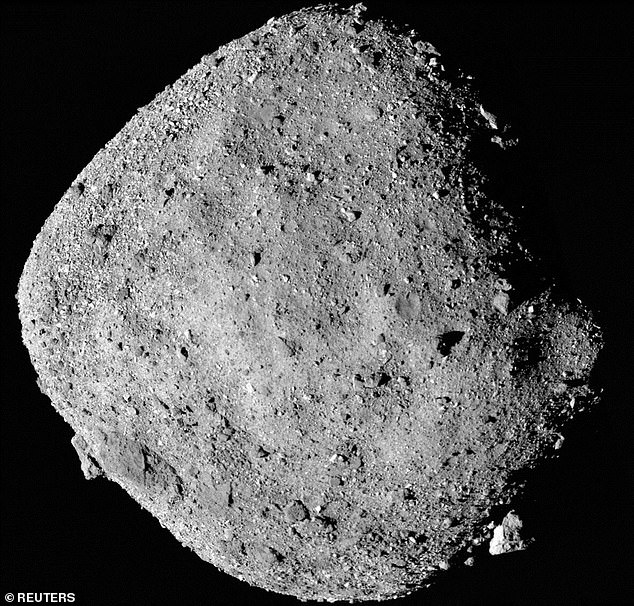
Currently orbiting the sun 50 million miles (81 million kilometers) from Earth, Bennu is about a third of a mile (half a kilometer) across, about the size of the Empire State Building
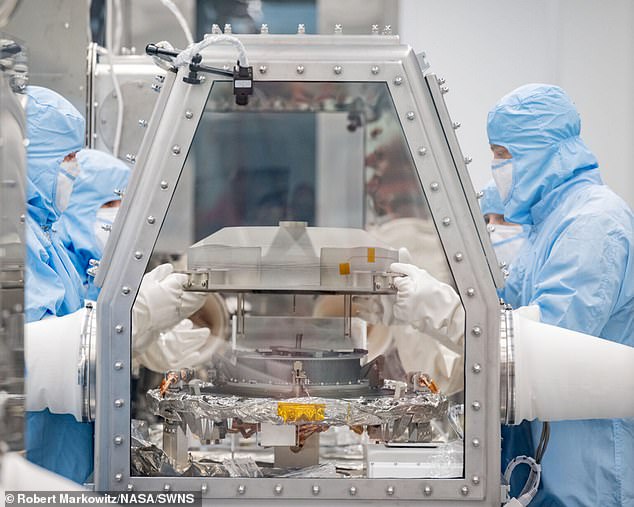
Scientists are scheduled to display the samples today at 11 a.m. ET from NASA’s Johnson Space Center in Houston.
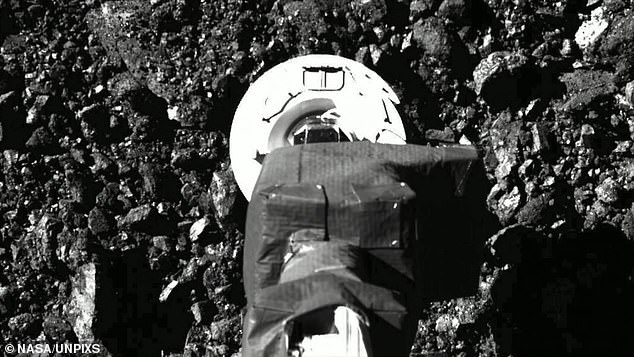
OSIRIS REx collected the samples that will be seen by the world for the first time
When it returned, the spacecraft had logged four billion miles.
The capsule hit the atmosphere at 27,650 miles per hour (mph) after being released by the spacecraft at 6:42 a.m. ET.
Bennu currently orbits the sun 50 million miles (81 million kilometers) from Earth, and is about a third of a mile (half a kilometer) across, about the size of the Empire State Building.
The asteroid is also shaped like a spinner and is believed to be the broken fragment of a much larger space rock.
Bennu is considered the most dangerous rock in the Solar System because its orbit with Earth gives it the highest chance of hitting the planet of any known space object.
NASA has long been studying the asteroid and revealed in 2021 that it has a 1-in-1,750 chance of slamming into our planet on the afternoon of September 24, 2182.
Even if the asteroid were to collide with our planet, it would be nowhere near the size of the dino-killing, six-mile-across space rock that hit the Yucatan Peninsula 66 million years ago, as Bennu is less than a third of a mile is wide. .
Nevertheless, if Bennu were to hit Earth, it would be similar to an explosion of more than 1.1 billion tons of TNT.
Kelly Fast, program manager for the Near-Earth Object Observation Program at NASA Headquarters in Washington, said in 2021: ‘NASA’s Planetary Defense mission is to find and monitor asteroids and comets that may come close to Earth and pose a threat. can mean for our planet.
‘We carry out this effort through ongoing astronomical surveys that collect data to discover previously unknown objects and refine our orbital models for them.
“The OSIRIS-REx mission provided an extraordinary opportunity to refine and test these models, helping us to better predict where Bennu will be when it makes its close approach to Earth more than a century from now .’
